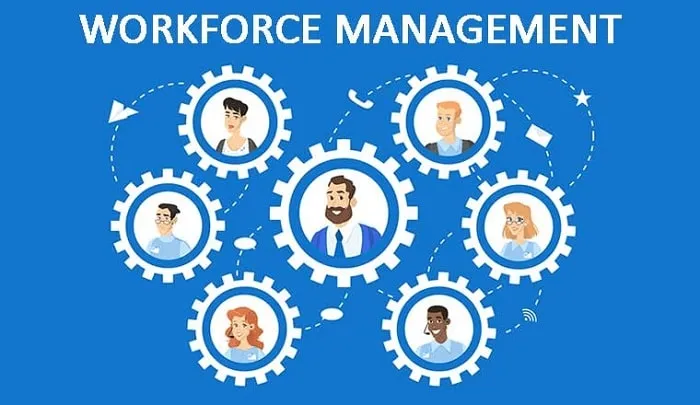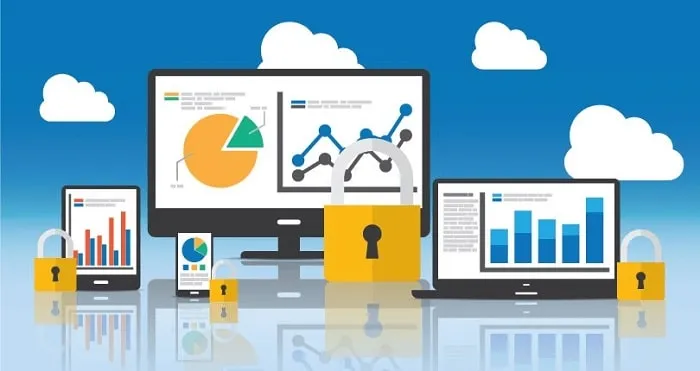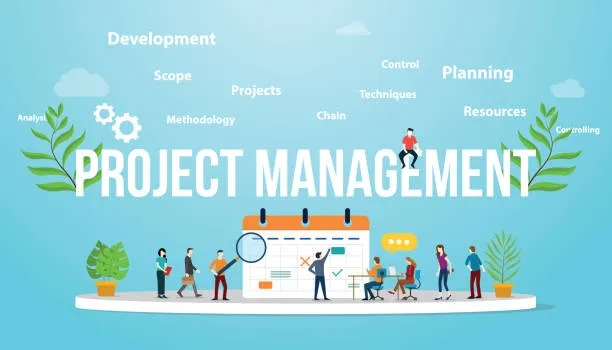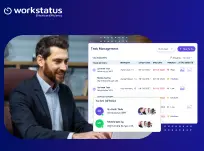Table of Contents
which is the main challenge in managing a diverse workforce?
The field of modern workforce management has seen tremendous growth in the past few years, and experts predict that it will only continue to grow over the coming years.
Workforce management trends change over time to reflect the ever-evolving needs of businesses. The 2023 workforce differs greatly from earlier, and your workforce management strategy must change with it if you want to remain competitive in the coming years.
Employee retention, analytics, and a mobile workforce are major workplace trends that will have the most significant impact on how businesses deal with their workforces in the future.
Businesses are always up to improving their workforce management strategies. The latest workforce management trends are based on those improvements which are further likely to evolve in the future.
These changes might be universal, so it is essential to look at what they might mean to your business and how you can prepare now to make sure you stay ahead of the competition and beyond.
To help your business stay on top of these emerging workforce trends, we have compiled this list of the ten biggest workforce management trends, and beyond. You can expect these trends to emerge over the coming years.
So without any delay, let’s understand things in detail.
Introduction to Workforce Management
 Workforce management is a type of human capital management used by employers to manage their workforce. Workers can be managed through internal policies, outsourcing, or a combination of both.
Workforce management is a type of human capital management used by employers to manage their workforce. Workers can be managed through internal policies, outsourcing, or a combination of both.
At its core, workforce management is simply keeping track of what your employees are doing and ensuring that it aligns with company policy.
While some elements of workforce management have been around for decades, it’s only recently become an important area due to several factors, including globalization, improved information technology, and economic shifts.
Workforce management determines whether your employees are working efficiently or not. It also helps determine how to manage your workforce best to increase productivity, reduce costs, and ensure compliance with internal policies.
Top 10 Workforce Management Trends You Can’t Miss!
1) Adapting To New Skills
 As technologies change, workplace needs also change, requiring new skills in upcoming years. Existing employees need to be trained to adapt to these new requirements. Workforce analytics plays a crucial role in tracking employee progress toward these goals in real-time and using the data to make necessary changes.
As technologies change, workplace needs also change, requiring new skills in upcoming years. Existing employees need to be trained to adapt to these new requirements. Workforce analytics plays a crucial role in tracking employee progress toward these goals in real-time and using the data to make necessary changes.
The trend to watch is how companies adapt to these new skill requirements by building workforce analytics capabilities that lead to a more personalized approach to training their employees.
Workforce analytics platforms enable companies to identify the most in-demand skills and develop them internally or hire externally.
With a more data-driven approach, workforce management leaders can build custom training programs to fill critical skill gaps. This leads to higher employee engagement and retention rates and better job performance.
2) Managing Remote Teams Globally
 Which is the main challenge in managing a diverse workforce?
Which is the main challenge in managing a diverse workforce?
As companies hire more remote workers, workforce analytics become more critical. Remote employees cannot walk into a manager’s office to discuss performance issues.
Systems for managing workforce provide real-time information about where employees are located, what they’re working on, how long they take to complete tasks, and how much time they spend on their projects. This data helps managers detect issues early on and address them before they become significant.
3) Hiring People With Disabilities
 What is managing workforce diversity?
What is managing workforce diversity?
Hiring people with disabilities, including physical, mental, or learning challenges, taps into a significant untapped talent pool.
Research from Job Accommodation Network shows that accommodating workers with disabilities results in lower turnover rates and higher productivity across all industries. Walgreens, FedEx, and UPS have already hired employees with disabilities.
The U.S. Bureau of Labor Statistics estimates that more than 54 million Americans have some form of disability, nearly 20 percent of the population, which is expected to grow to over 66 million in the upcoming years. Hiring people with disabilities is not only a wise business decision but also an ethical one.
4) Security Concerns
 With more company data saved in cloud-based systems, data security becomes a bigger issue. Cyberattacks are expected to soar over the next few years, and companies will have to work harder to ensure their sensitive information isn’t leaked or stolen. Businesses are expected to increase their spending on cybersecurity by nearly 50 percent over the next five years.
With more company data saved in cloud-based systems, data security becomes a bigger issue. Cyberattacks are expected to soar over the next few years, and companies will have to work harder to ensure their sensitive information isn’t leaked or stolen. Businesses are expected to increase their spending on cybersecurity by nearly 50 percent over the next five years.
While most organizations already have a plan in place for data security, there’s always room for improvement. Many companies are going beyond basic security measures and implementing new strategies beyond encryption.
For example, some companies are looking into blockchain technology to secure sensitive information from internal employees and external hackers.
Maintaining data security will be one of the biggest workforce management trends over the next few years, and it is essential to stay up-to-date on all of your company’s data security measures.
————————————————————————————————————————–
Also Read: The Ultimate Guide To Mobile Workforce Management (MWM)
—————————————————————————————————————————
5) Mobile Accessibility And Communication Tools

The demand for mobile-friendly workforce management systems will increase substantially in the coming years. Many employees use their smartphones to access work documents, communicate with coworkers, and perform other work tasks while away from their desks.
Employers will ensure that their workforce management solutions are compatible with smartphones, tablets, and other portable devices to meet employee needs as technology evolves.
As more employees work remotely, employers will need to ensure that their workforce management solutions allow them to communicate with their coworkers.
Workforce management systems will become increasingly integrated with collaboration tools, such as instant messaging, video conferencing, and social media platforms. This will allow employees to communicate effectively from wherever they are located.
6) Project And Resource Management

Project management software has helped to improve efficiency and keep projects on track. It’s also been a boon to IT recruiting as project managers typically possess strong technical acumen in addition to management skills. For these reasons, we think project management is going to become more popular in the coming years.
As companies look for ways to optimize workflows, it would not be surprising to hand over the project to specialized teams who can implement tried-and-true methodologies to manage tasks according to set milestones.
The shift in today’s workforce towards work-from-home culture also puts more pressure on companies to support remote employees and business processes. That is why more organizations, big or small, look into integrations with ERP software to optimize and support their work.
For one, you can view your data, make adjustments, and close your accounting books more accurately. ERP also helps with complying with accounting standards and regulatory requirements. You can eliminate using disparate systems dependent on IT to generate and gather reports. ERP systems speed up and simplify this process.
As more industries become digitized, project management is already becoming a key part of IT recruiting, and we expect it to play an even bigger role in the coming years.
7) Real-Time Reporting
 The days of gathering data from a few sources, crunching numbers in excel, and then manually compiling them into a comprehensive report are over.
The days of gathering data from a few sources, crunching numbers in excel, and then manually compiling them into a comprehensive report are over.
Organizations now have access to advanced technological solutions for managing their workforce, including software development options.
By automating data collection from various sources and providing real-time insights through interactive dashboards, these tools have transformed the way businesses operate.
Benefits gained from such tech solutions often outweigh the initial cost of software development, leading to improved productivity and enhanced decision-making processes.
Workforce management software delivers real-time reporting so that you always have up-to-date information on your employees and their performance. This means that any problems can be spotted immediately, rather than when it becomes too late to fix them.
8) Time & Attendance Systems
 The demand for time & attendance systems will increase as more organizations have to manage their workforce. These tools help manage work hours, leave, vacation, sick leaves, etc.
The demand for time & attendance systems will increase as more organizations have to manage their workforce. These tools help manage work hours, leave, vacation, sick leaves, etc.
Employees can also use these tools to track their hours of work. These solutions make it easier for employers to maintain compliance with regulations and reduce payroll costs.
With increased regulations on managing payroll, employees are becoming more aware of how they spend their time at work. This awareness is expected to drive the adoption of time tracking software among employees to keep a check on their productivity levels at the workplace and improve performance levels over a period to get better rewards and promotions.
9) Contract Workers And Freelancers Will Become A Part Of The Corporate Culture
 As companies make more flexible work arrangements, contract workers will become a more significant part of the corporate culture. In fact, in 2026, a Gartner study estimates that 35% of workers worldwide will be freelancers, up from just 9% in 2020.
As companies make more flexible work arrangements, contract workers will become a more significant part of the corporate culture. In fact, in 2026, a Gartner study estimates that 35% of workers worldwide will be freelancers, up from just 9% in 2020.
The flexibility to hire freelancers and contract workers offer businesses many benefits, including reduced costs, increased productivity, and access to talent worth value.
Businesses realize that they can accomplish more by hiring freelancers and contract workers, making it a trend that is here to stay for the long term.
—————————————————————————————————————————–
Also Read: Law of Diminishing Marginal Productivity & Why Productivity Tracking Is Essential?
——————————————————————————————————————————
10) Job Satisfaction Will Remain High

One of many workforce management trends and beyond is that employee satisfaction will remain high with even more people having access to flexible work arrangements.
Already, employees who work from home report higher levels of job satisfaction than those who don’t. As organizations continue to implement changes in culture, flexibility, and methods of communication, employees will feel even more valued by their employers, and they’ll be happier as a result.
Overall, job satisfaction will remain a high priority, and employees will be able to stay engaged with their jobs for a more extended period.
Workstatus The Best Workforce Management Software
Workstatus is a cloud-based workforce management software that helps companies manage their employees, tasks, projects, and more.
Workstatus provides workforce analytics that enables businesses to be more efficient by providing insights into how they are managing their workforce. The platform is designed to help businesses reduce costs and increase productivity by allowing them to work smarter, not harder.
Workstatus is intuitive, with a clean interface that is easy to use. The software offers real-time visibility into employee tasks, projects, and schedules. It also provides managers with insights into how their employees are spending their time.
With Workstatus, managers can schedule tasks directly from their desktop or mobile device. They can also assign tasks to specific employees or groups of employees based on availability and skill set. Employees can view their schedules in real-time and see what other employees are working on.
All in all, Workstatus is a comprehensive workforce management system that helps businesses get more done with less effort. The software helps employees work smarter, managers manage better, and companies save money.
So what are you waiting for?
Sign up now and claim a free trial today.
Conclusion
The future of workplace management is evolving quickly, which means if you want to stay on top of them and keep your business running smoothly, you need to anticipate what’s next.
To help you do that, we’ve compiled a list of global workforce trends that will shape our world. As you read through these trends, think about how they might affect your business strategy going forward.
What do you think of these trends? Which ones do you agree with? Do you see other workforce management trends that didn’t make our list?
We’d love to hear from you in the comments below. And if you found this post helpful, please share it on social media.
That’s all for now. If you liked it, please subscribe to our blogs to get more useful content right into your inbox.
We will catch you next time. Until then, have a great day.
Thank You!!











